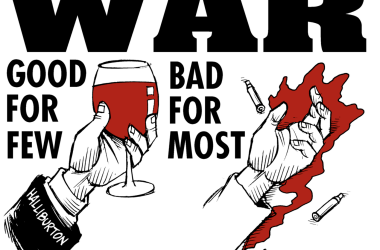By Gabriel Kuhn
A review of Jake Alimahomed-Wilson and Immanuel Ness (eds.), Choke Points: Logistics Workers Disrupting the Global Supply Chain (London: Pluto Press, 2018).
After Wobblies of the World: A Global History of the IWW and Southern Insurgency: The Coming of the Global Working Class, the anthology Choke Points: Logistics Workers Disrupting the Global Supply Chain, edited by Jake Alimahomed-Wilson and Immanuel Ness, is the third book in Pluto Press’s Wildcat series about “Workers’ Movements and Global Capitalism” that I’m reviewing for this blog. It is worth quoting from the series’ description to underline its timeliness and urgency:
“Since the 1970s, organized labour has declined in size and influence as the global power and influence of capital has expanded dramatically. The world over, existing unions are in a condition of fracture and turbulence in response to neoliberalism, financialization, and the reappearance of rapacious forms of imperialism. New and modernized unions are adapting to conditions and creating class-conscious workers’ movements rooted in militancy and solidarity. Ironically, while the power of organized labour contracts, working-class militancy and resistance persists and is growing in the Global South.”
Even if labor organizer Peter Onley, in his article “Beyond the Waterfront: Maintaining and Expanding Worker Power in the Maritime Supply Chain”, states that “the fascination with ‘choke points’ or strategic points of intervention is as old as the workers’ movement”, “choke points” have received special attention in recent years due to just-in-time manufacturing and global commodity chains. They are, for example, a big feature in Torkil Lauesen’s book The Global Perspective: Reflections on Imperialism and Resistance, which I had the pleasure to translate.
It doesn’t need much analysis and theory, of course, to understand the importance of the logistics sector for global capitalism. Alimahomed-Wilson and Ness open their book with a reference to a quintessential logistics symbol: the standardized shipping container, which revolutionized global transport and trade in the 1950s. Having grown up in the German-speaking world, I was fascinated by how often I would spot “Hamburg Süd” containers during my post-university travels in the early 2000s, no matter whether I found myself in Hong Kong, Mombasa, or Samoa. And while it is true, as Alimahomed-Wilson and Ness suggest, that “although containers are seemingly everywhere – hiding in plain sight – they remain an enigma for most customers, and in some sense obscure the economic and power relationships inherent in global capitalism”, we are confronted with the importance of the logistics sector not only when Schenker delivers our latest IKEA purchase or when we click a button to order lunch to the office, but whenever we open a newspaper. Just a few days ago, there was a piece about systematic wage dumping among subcontractors doing deliveries from the newly opened Amazon warehouse in Austria in the country’s liberal daily Der Standard, while past year’s Brexit madness brought us numerous articles about how an extra two minutes at customs per truck would tumble post-Brexit Britain into a serious economic crisis, with a shortage of fresh produce, idle assembly lines due to missing parts, and so forth. While practical solutions to these problems will probably be found (albeit at a price), there is no escaping the central role that the logistics sector plays in union politics. In Sweden, where I’ve been living for more than a decade and am active in the syndicalist SAC, repeated strikes of the Dockworkers Union have led to an overhaul of national labor law, with the new regulations, passed in June 2019, significantly restricting the right to strike and other industrial action. (In Sweden. That’s right.)
Alimahomed-Wilson and Ness see the “world’s logistics workers” as “a key group of laborers who are on the front lines of critical worker’s struggles around the world”. They are “longshore workers (dockworkers), warehouse and distribution center workers, seafarers, railroad workers, and truckers (both port truckers and long haul).” “Choke points” are described as “critical nodes in the global capitalist supply chain”. The intention behind the book is summarized as follows: “This volume seeks to identify the key labor struggles in the global logistics system to advance dialogue and connections between disparate workers’ struggles, which are too often fragmented from each other by borders, regions, or the long supply chains.”
The fifteen articles collected by the editors offer examples of workers’ struggles from China and Indonesia to Palestine and Turkey to Chile and Southern California. The struggles are inspiring and often very straightforward. Take the following example offered by Peter Cole in his article “Durban Dockers, Labor Internationalism, and Pan-Africanism”:
“On April 21, 2008, the Chinese ship An Yue Jiang docked in Durban, ‘Carrying three million rounds of ammunition for AK-47 assault rifles and small arms, 3,500 mortars and mortar tubes as well as 1,500 rocket propelled grenades’. Zimbabwean President Robert Mugabe, of South Africa’s landlocked neighbor, purchased this arsenal to retain power amidst a highly contested election during which his military and police beat thousands and killed hundreds of Zimbabweans. Mugabe’s forces also brutally assaulted his political rival, who had won the election’s first round and served as secretary-general of the Zimbabwe Congress of Trade Unions. Instead of unloading the cargo, the Durban branch of the South African Transport and Allied Workers Union (SATAWU) embargoed the ship in solidarity with Zimbabwean workers opposing Mugabe. Subsequently, dockers in other southern African ports joined this boycott and the ship returned to China with its deadly cargo.”
Other examples point to the possibilities of labor organizing beyond traditional unions, not least of importance in times when, as noted above, the power of traditional unionism is declining. In their article “‘Work Hard, Make History’: Oppression and Resistance in Inland Southern California’s Warehouse and Distribution Industry”, labor scholars Ellen Reese and Jason Struna draw the following conclusion: “As the warehouse workers’ anti-Walmart campaign demonstrated, it is possible to win victories for non-unionized workers through a combination of legal advocacy and social justice organizing for policy gains, and to do so in alliance with other workers linked through a global supply chain.”
Some of the contributions to the book also remind us of how fast things are changing in the neoliberal era – and not always for the worse. Poland’s grassroots union IP, for example, featured in an article about the self-organization of Amazon workers, has more than tripled its membership since this book was released. Meanwhile, the labor movement in Hong Kong, whose relative weakness is bemoaned in a contribution by Bai Ruixue and Au Loong Yu, seems to have regained strength during the latest wave of political unrest in the territory.
Choke Points is an important book, for labor activists, scholars of global capitalism, and an interested public alike. The introduction by the editors has manifesto-like qualities, evoking “the key role that [logistics] workers have played, and will continue to play, in building capacity for worker’s resistance in the global struggle against exploitation”. Jake Alimahomed-Wilson also deserves credit for taking his employer, Cal State Long Beach, to task for not including a labor perspective in newly established programs such as Global Logistics and Supply Chain Management. It is all too easy to point at problems at a distance, while turning a blind eye to those that are close.
(February 2020)
More blogs from Gabriel | Back to Gabriel Kuhn’s Author Page






